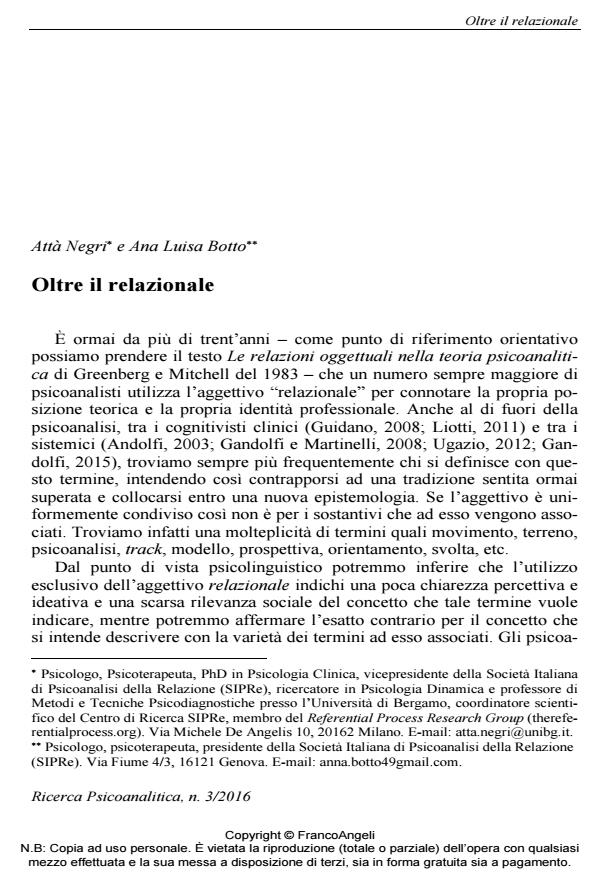Oltre il relazionale
Journal title RICERCA PSICOANALITICA
Author/s Attà Negri, Ana Luisa Botto
Publishing Year 2016 Issue 2016/3
Language Italian Pages 19 P. 87-105 File size 263 KB
DOI 10.3280/RPR2016-003007
DOI is like a bar code for intellectual property: to have more infomation
click here
Below, you can see the article first page
If you want to buy this article in PDF format, you can do it, following the instructions to buy download credits

FrancoAngeli is member of Publishers International Linking Association, Inc (PILA), a not-for-profit association which run the CrossRef service enabling links to and from online scholarly content.
The authors propose an appraisal of the major epistemological, theoretical and clinical acquisitions consigned over the last thirty years by the authors self-defined and defined within psychoanalysis as relational. Starting from the recognition of the innovative and extraordinarily rich character of this set of new knowledge, attitudes and beliefs it is argued the need to go further on this path of change along three main directions: a) the construction and sharing of a general theory of the mind in relation, giving an explanation of how the subject psychologically constructs the relationship with the context in many ways and at many levels, b) the shift from a two-person psychology to a multi-persons psychology, considering the relationship between two people always permeated by a multiplicity of conversational partners and identifying the typical family configurations that can lead to suffering, c) developing a theory of the technique coherent with the epistemology and theory of mind in this context chosen, where can take new meanings some psychotherapeutic techniques since a long time used and can be created new ones, more useful and appropriate to the new theoretical frame. The proposed challenge is a joint working between the relational psychotherapists of the main clinical approaches, guided by the need for more and more conscious assumption of the professional responsibility in the choices we make every day in relations with the patients.
Keywords: Relational psychoanalysis, complexity epistemology, theory of mind, multipersonal psychology, relational psychotherapeutic techniques
Attà Negri, Ana Luisa Botto, Oltre il relazionale in "RICERCA PSICOANALITICA" 3/2016, pp 87-105, DOI: 10.3280/RPR2016-003007